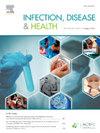澳大利亚的感染预防与控制认证:理念、原则和实践。
IF 2
Q2 PUBLIC, ENVIRONMENTAL & OCCUPATIONAL HEALTH
引用次数: 0
摘要
感染预防和控制计划对于确保医疗保健消费者和员工的健康和福祉至关重要。领导这些计划的感染控制专业人员具有独特的知识、技能和特质,能够在其所在的医疗机构内指导有效的感染控制实践和政策。与许多专业一样,这些专业人员可以选择进行资格认证,由专业机构对他们的专业知识和能力进行评估和正式认可。在全球范围内,越来越多的证据表明,资格认证提高了感染控制专业人员的执业标准,并为员工、患者和他们所在的更广泛的医疗保健系统带来了有益的结果。在澳大利亚,认证是 20 世纪 90 年代中期随着感染控制专业人员的迅速发展而出现的一项相对较新的工作。在本文中,我们将详细介绍澳大利亚感染控制专业人员资格认证的历史和演变。我们还评估了当前的三级资格认证框架,包括其基本理念、如何区分 "能力 "与 "才干"、为职业发展提供的机制,以及为应对澳大利亚感染控制领域的重要当代发展(包括不断扩大的当代实践多样性)而进行的调整。本文章由计算机程序翻译,如有差异,请以英文原文为准。
Credentialling in Australia for infection prevention and control: Philosophy, principles and practice
Infection prevention and control programs are vital to ensuring the health and wellbeing of healthcare consumers and staff. Infection control professionals who lead these programs are uniquely positioned with the knowledge, skills and attributes to direct effective infection control practices and policies within their healthcare setting. As with many specialisations, these individuals may choose to undertake a credentialling process, where their expertise and competence are evaluated and formally recognised by a professional body. Globally, there is growing evidence that credentialling improves the standard of practice of infection control professionals, and achieves beneficial outcomes for staff, patients and the broader healthcare systems in which they operate. In Australia, credentialling is a relatively new endeavour emerging in the mid 1990s with the rapidly evolving profile of the infection control professional. In this paper, we detail the history and evolution of credentialling of the infection control professionals in Australia. We also appraise the current three-tier credentialling framework, including its underlying philosophy, how it distinguishes between ‘competence’ and ‘capability’, the mechanisms it provides for career development, and its adaptation in response to critical contemporary developments in the field of infection control in Australia, including the expanding diversity of contemporary practice.
求助全文
通过发布文献求助,成功后即可免费获取论文全文。
去求助
来源期刊

Infection Disease & Health
PUBLIC, ENVIRONMENTAL & OCCUPATIONAL HEALTH-
CiteScore
5.70
自引率
5.70%
发文量
40
审稿时长
20 days
期刊介绍:
The journal aims to be a platform for the publication and dissemination of knowledge in the area of infection and disease causing infection in humans. The journal is quarterly and publishes research, reviews, concise communications, commentary and other articles concerned with infection and disease affecting the health of an individual, organisation or population. The original and important articles in the journal investigate, report or discuss infection prevention and control; clinical, social, epidemiological or public health aspects of infectious disease; policy and planning for the control of infections; zoonoses; and vaccination related to disease in human health. Infection, Disease & Health provides a platform for the publication and dissemination of original knowledge at the nexus of the areas infection, Disease and health in a One Health context. One Health recognizes that the health of people is connected to the health of animals and the environment. One Health encourages and advances the collaborative efforts of multiple disciplines-working locally, nationally, and globally-to achieve the best health for people, animals, and our environment. This approach is fundamental because 6 out of every 10 infectious diseases in humans are zoonotic, or spread from animals. We would be expected to report or discuss infection prevention and control; clinical, social, epidemiological or public health aspects of infectious disease; policy and planning for the control of infections; zoonosis; and vaccination related to disease in human health. The Journal seeks to bring together knowledge from all specialties involved in infection research and clinical practice, and present the best work in this ever-changing field. The audience of the journal includes researchers, clinicians, health workers and public policy professionals concerned with infection, disease and health.
 求助内容:
求助内容: 应助结果提醒方式:
应助结果提醒方式:


